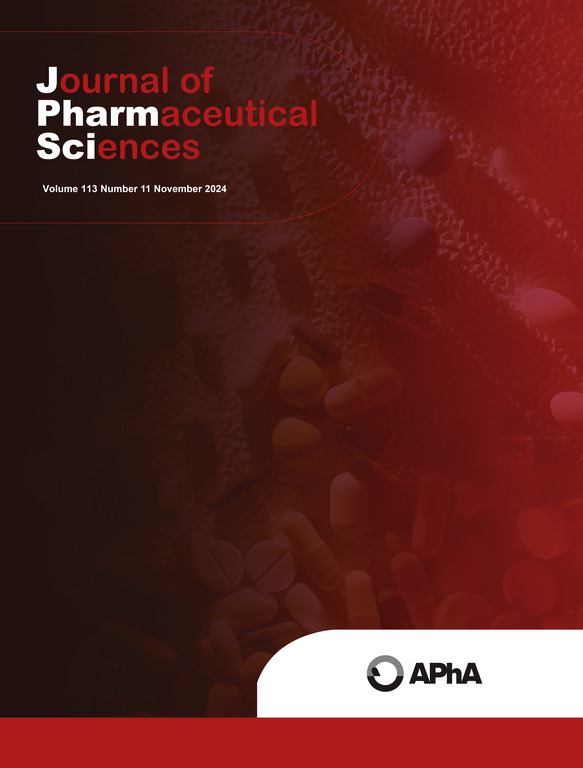在聚合物重叠浓度 (c*) 以上延迟无定形固体分散体的首次成核事件:泊沙康唑中的 PVP 和 PVPVA。
IF 3.7
3区 医学
Q2 CHEMISTRY, MEDICINAL
引用次数: 0
摘要
全面了解聚合物对无定形药物结晶的影响对于合理设计稳健的无定形固体分散体(ASD)至关重要,因为无定形药物的结晶会抵消其溶解度优势。在这项研究中,我们测量了泊沙康唑(POS)/乙烯基醋酸聚乙烯吡咯烷酮(PVPVA)和 POS/ 聚乙烯吡咯烷酮(PVP K25)ASD 的首次成核时间(t0,在新鲜液体/玻璃中形成第一个临界核的时间),结果表明聚合物重叠浓度(c*,相邻聚合物链开始接触的浓度)是控制 ASD 结晶的关键。当聚合物浓度 c < c* 时,POS ASD 的 t0 约等于纯无定形 POS 的 t0,但当 c > c* 时,t0 会显著增加。这一观察结果支持了一种观点,即在高于 c* 的 ASD 中,结晶的有效抑制作用主要与首次成核事件的延迟有关。我们的发现有助于高效选择聚合物和预测高药物负载 ASD 配方的性能。本文章由计算机程序翻译,如有差异,请以英文原文为准。

Delaying the first nucleation event of amorphous solid dispersions above the polymer overlap concentration (c*): PVP and PVPVA in posaconazole
A thorough understanding of effects of polymers on crystallization of amorphous drugs is essential for rational design of robust amorphous solid dispersion (ASD), since crystallization of the amorphous drug negates their solubility advantage. In this work, we measured the first nucleation time (t0, time to form the first critical nucleus in fresh liquid/glass) in posaconazole (POS)/polyvinylpyrrolidone vinyl acetate (PVPVA) and POS/polyvinylpyrrolidone (PVP K25) ASDs and showed that the polymer overlap concentration (c*, concentration above which adjacent polymer chains begin to contact) is critical in controlling crystallization of ASDs. When polymer concentration c < c*, t0 of POS ASDs is approximately equal to that of the neat amorphous POS, but it increases significantly when c > c*. This observation supports the view that the effective inhibitory effect of crystallization in ASDs above c* is primarily correlated with delay in the first nucleation event. Our finding is useful in efficient polymer selection and performance prediction of high drug loaded ASD formulations.
求助全文
通过发布文献求助,成功后即可免费获取论文全文。
去求助
来源期刊
CiteScore
7.30
自引率
13.20%
发文量
367
审稿时长
33 days
期刊介绍:
The Journal of Pharmaceutical Sciences will publish original research papers, original research notes, invited topical reviews (including Minireviews), and editorial commentary and news. The area of focus shall be concepts in basic pharmaceutical science and such topics as chemical processing of pharmaceuticals, including crystallization, lyophilization, chemical stability of drugs, pharmacokinetics, biopharmaceutics, pharmacodynamics, pro-drug developments, metabolic disposition of bioactive agents, dosage form design, protein-peptide chemistry and biotechnology specifically as these relate to pharmaceutical technology, and targeted drug delivery.

 求助内容:
求助内容: 应助结果提醒方式:
应助结果提醒方式:


